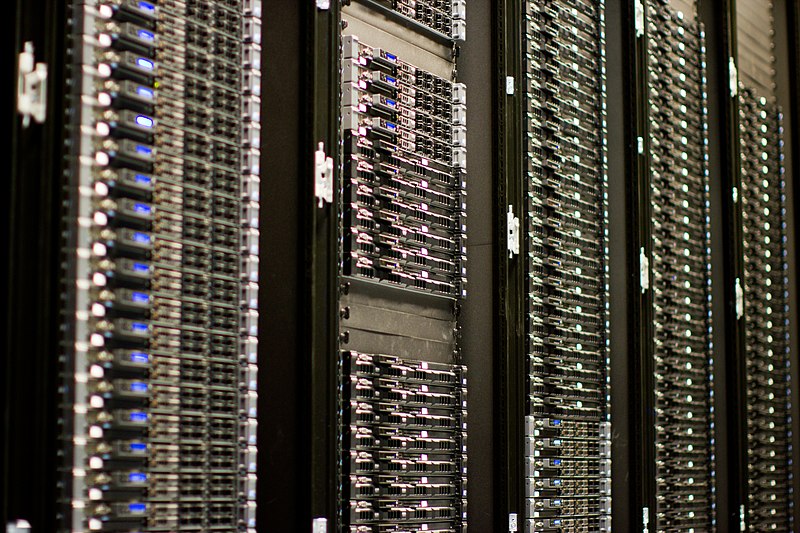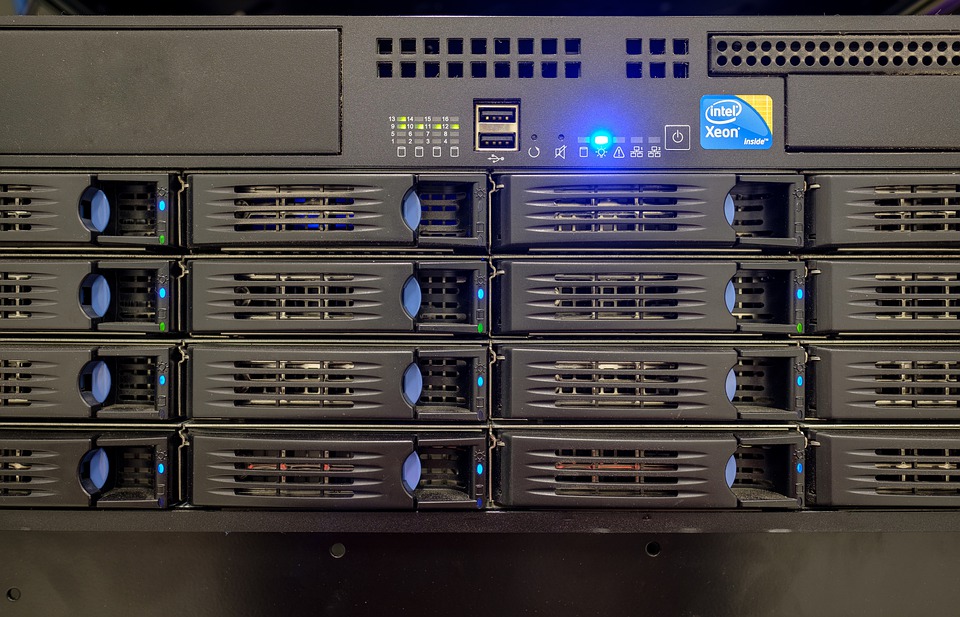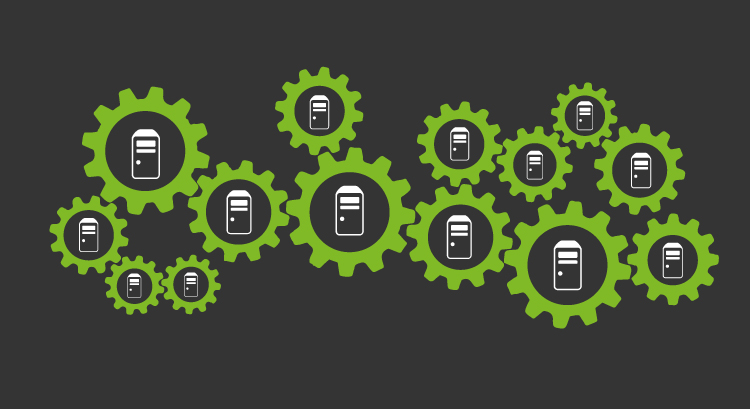Server operating system: a basic and fundamental piece of software
Web server. File server. Email server… In this post we could review most of the servers we use every day; this world is highly interconnected on a global scale. I write these lines from America and whether you are in Europe or anywhere else in the world, you’ll use at least one server to read this and have the basic notions of what a server operating system is, but not without first knowing the background of this specialized software!
Non-dedicated server and dedicated server
Both will need a Server operating system, but we can even use the non-dedicated one ourselves for our daily work and to offer services to our co-workers. For example, if we have a very fast printer and despite laser technology it has a low power consumption, that turns our computer into a print server, with the inherent limitations.
Now, we can place our computer as a dedicated server simply by not logging in to the user and, if possible, uninstalling the graphical user interface. You have guessed well: a dedicated server (or simply server in the rest of this writing) only has the task of serving remote requests, including requests to be managed (software update, etc.) and we do not even need to sit in front of that computer, because it will not even show us graphics on the screen. Other things it probably won’t have, will be optical readers and USB ports; nor will a mouse and keyboard be needed (actually, when multiple servers are together they group them into a single monitor, keyboard and mouse for everyone with a converter or “KVM” device).
What has happened over the decades? Well, the cost of hardware components has fallen in price and they have been incorporating it into motherboards for our benefit as end users. In our local area network we will be able to implement them, if it is with GNU/Linux good, but be careful that the matter has drawbacks!
Computer manufacturers have made sure that we have some very good equipment at our disposal that we can use as servers for a handful of users, but also to save money they have eliminated microprocessors and chips, so that they have derived the work they did towards the operating system… And here we enter into the subject: a server operating system will not do that work, because that would be a waste of resources. What’s more, we won’t even be able to use it, it will maybe recognize the hardware additions, but it’ll need specialized controllers that you have to install separately, and no server operating system can afford to jeopardize its stability with such adaptations and spend memory and use the Central Processing Unit (CPU) for it.

Legend: Wikimedia Foundation Servers
https://commons.wikimedia.org/wiki/File:Wikimedia_Foundation_Servers-8055_35.jpg
Server hardware
An example that illustrates the previous section are network cards. We’re talking about those entries that we put a cable in, which is a little wider than the ones we use on the old office phones (even today we are assigned cubicles or offices with that endowment to communicate with us). A server will have several of them, which can be replaced without shutting down the computer, and in addition the Server Operating System will do absolutely nothing of the work that they are required to do. Encrypt any of the communications? Okay, the CPU can do it too, but such work can – and should – be done on hardware by network cards (this is a simple example to illustrate, it goes didactically).
In Spanish redundancy is disliked and avoided, but for server hardware it is the opposite: It is required! Thus, a server will also have two or more power sources, many hard drives (now of solid state), lots of random access memory (RAM) and multiple CPUs, each with multiple cores… All of this brings us to the concept of a Server operating system.

Legend: «Removable hard drives
Pixabay https://pixabay.com/photos/server-drive-bay-hard-drives-memory-4393370/
Server operating system
There are server manufacturers who assemble the entire equipment, and generally sell them directly online. We will order them by specifying the estimated workload they will have, which will cost us more money the higher the load (more hardware needed). Such producers shall recommend an appropriate and optimized server operating system.
Although we can choose a proprietary Operating System (OS), this will limit our work because we will depend on that company for everything that has to do with software. For that reason, currently a Server OS is synonymous with GNU/Linux: almost one hundred percent of supercomputers run with the penguin logo and the Ñu. The main representatives are:
- Suse Linux Enterprise Server (SLES): Legendary, pioneer since 1992 for businesses; its community version OpenSUSE, both, have extensive experience for your management.
- Gentoo: A minimalistic distribution requires more work by network administrators because they will have to “customize” it (add, install software) according to the needs of each.
- Red Hat Enterprise Linux: Long-term support and hardware-certified software make it a major competitor. Its community version, CentOS, is your favorite home of monitoring software.
- Debian: a champion in distribution and committed to free software, very stable and light. Its descendant, my favorite, is Ubuntu, which has long-term support and is also very dynamic with updates (more security, but could decrease stability). It also has a very popular desktop version; I use both.
As we said, the hardware now has a lot of computing power and prices have even lowered, which favors as business users for our own physical servers, but companies larger than ours can acquire fantastic equipment to give a step further. See.
Server of servers
Yes, I introduce that term to refer to virtual machines, making a difference with what hypervisors are. A hypervisor is another server operating system application, and can contain dozens of virtual servers that are very varied. In this special scenario I locate the monitoring, that we can perform by the way with Pandora FMS or any of the ones that we have analyzed and compared in this blog.
“Reliability, Availability, and Serviceability” (RAS) is a term introduced decades ago by the blue giant, IBM®, for its mainframes and over time for software; in fact, every Server Operating System must meet those premises.
- Reliability: Almost always delivers a satisfactory result, even if it involves closing applications that get out of control and starting them again, or even restarting a server completely (hard reset). Unfortunately, we don’t only evaluate by result and for this Pandora FMS is very capable of alerting us about restarts, failures in the mail service or database, etc; when and for how long, all of this will allow analysis for possible future events.
- Availability: regulated by the famous ‘five nines’ rule, i.e. 99.999% of online time (five minutes offline in a year). Pandora FMS has special tools for this purpose and, if we decide to delegate to a third party the hosting and operation of our servers outside our company, we will confirm whether it complies with the contracted SLA.
- Serviceability: Early fault detection and timely warning to hardware administrators count, and are very important for fault recovery if they occur. At this point, Pandora FMS and any other good monitoring software are called to account, they are special for it. Does a solid-state hard drive support 50,000 writes? How many are left? Is the server temperature right for its components? Does it meet the manufacturer’s criteria? Pandora FMS will be able to answer these and many other questions for our server of servers, but wait, there’s more.
Monitoring as a whole
The above is just an appetizer for Pandora FMS. We will be able to keep an eye on the consumption, speed and congestion of our local network with our server of servers (internal communications) and the firewalls that receive external requests via SNMP to routers and modems. With Software Agents on leased machines in different cities around the world, we will be able to account for our web servers and/or satellite servers passing the encrypted information through the “Tentacle” protocol; By bypassing firewalls (duly authorized) we will be able to centralize and create in our console visual maps of the situation in general.
As this article should end, I invite you to read our weblog publications with many more indications and solutions about device monitoring.
Oh, and before we say goodbye, remember that Pandora FMS is a flexible monitoring software, capable of monitoring devices, infrastructures, applications, services and business processes.
Do you want to know more about what Pandora FMS can offer you? Find out by going here.
Or if you have to monitor more than 100 devices, you can also enjoy a FREE 30-day Pandora FMS Enterprise TRIAL. Get it here.
And remember that if you have a small number of devices to monitor you can use the OpenSource version of Pandora FMS. Find out more here.
Don’t hesitate to submit your inquiries. The Pandora FMS team will be happy to serve you!
Pandora FMS’s editorial team is made up of a group of writers and IT professionals with one thing in common: their passion for computer system monitoring. Pandora FMS’s editorial team is made up of a group of writers and IT professionals with one thing in common: their passion for computer system monitoring.
















